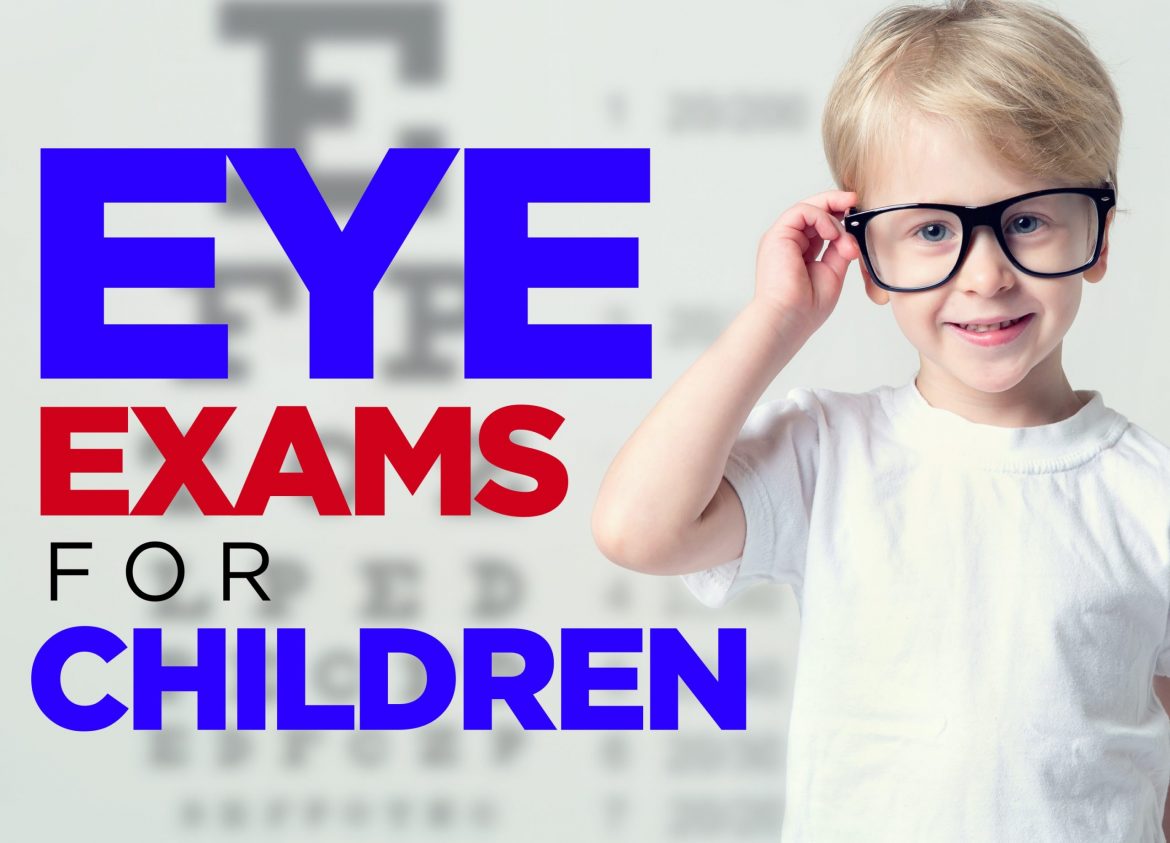![]()
August is National Eye Exam month. Optometry Times claims there are five great reasons you should care about eye examinations:
- Proper prescription
Your eye exam reveals if you need eyeglasses or contact lenses and what prescription will work best. If you already have prescriptive eyewear, keep in mind your vision needs tend to change as you age. - Detect eye conditions
An exam will enable your eye care professional to spot the early signs of diabetes, high blood pressure, glaucoma, and high cholesterol. - Prevent conditions
An optometrist can see early signs of diseases that may not present symptoms, such as macular degeneration or cataracts. Early detection is important. - Alleviate headaches
Visiting an eye care professional often leads to taking care of constant headaches. - Improve academic performance
Poor vision is a common reason children fall behind in school.
Speaking of children, this year, National Eye Exam month brings us an in-depth and important research compilation from National Center for Children’s Vision and Eye Health at Prevent Blindness titled, Children’s Vision and Eye Health: A Snapshot of Current National Issues.
If you’re a parent, you’ll want to keep reading.
Vision disorders in children are often undetected
The report begins by stating for too many children, visual disorders are not identified and treated. As such, the children may struggle in school and fail to reach developmental milestones.
It’s vital to understand vision has a critical role in the physical, cognitive, and social development of a child. Uncorrected disorders can impair development, hinder the child’s academic success, and even lead to vision loss. Many disorders leading to vision impairment are preventable.
Three common childhood vision disorders
Amblyopia (lazy eye)
Amblyopia is the most common cause of vision loss in children. The primary causes of the disorder are misalignment of the eyes and refractive error (or unequal refractive error) between the eyes. The vision loss typically affects only one eye, but those afflicted are nearly three times more likely to develop vision impairment in their other eye.
Strabismus (misalignment)
“Eye alignment” refers to how the eyes align and work together. With Strabismus, eyes are oriented in different directions and so the brain receives conflicting visual input.
Refractive errors
Three refractive errors—meaning light does not focus on the retina—are the most common vision disorders:
- Myopia (near-sightedness) — Distant objects are blurry.
- Hyperopia (far-sightedness) — Close objects are blurry.
- Astigmatism — Irregular eye shape causes blurry vision at distances.
Facts about early detection
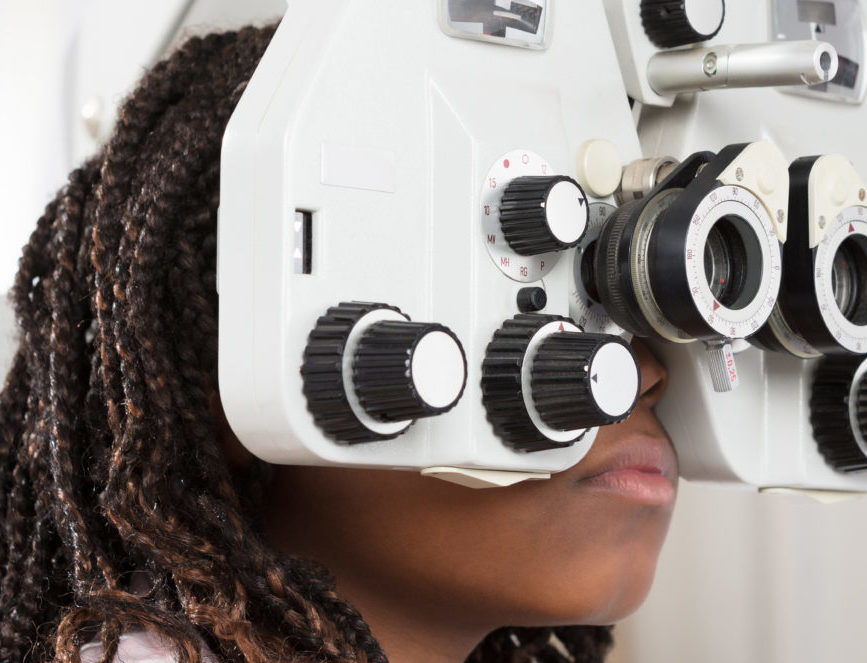
There is no national uniformity for childhood vision screening.
- 40 states mandate vision screening for children.
- 26 states require vision screening for pre-school aged children.
- The 2016-2017 National Survey of Children’s Health found 39% of children age 5 and younger have had vision tests.
- A report by the National Academies of Sciences, Engineering, and Medicine calls for increased consensus and uniformity in practice guidelines among stakeholders that address children’s vision and eye health.
Also, follow-up and treatment aren’t well documented.
- There is no national system to track screening or follow-up for eye care.
- One study reported by the CDC in 2020 showed fewer than half of preschool kids that did not pass the screening were referred for eye exams.
- Another study by the US Labor Department revealed two-thirds of children with referrals did not obtain care.
Race is a factor
The study cited above revealed non-white children were tested at a lower rate. Key findings also indicate children in higher household incomes and with college-educated parents are more likely to get vision tests.
Latino and African-American children were 2X – 3X more likely to have unmet vision needs.
Of course, health insurance coverage is a factor as well.
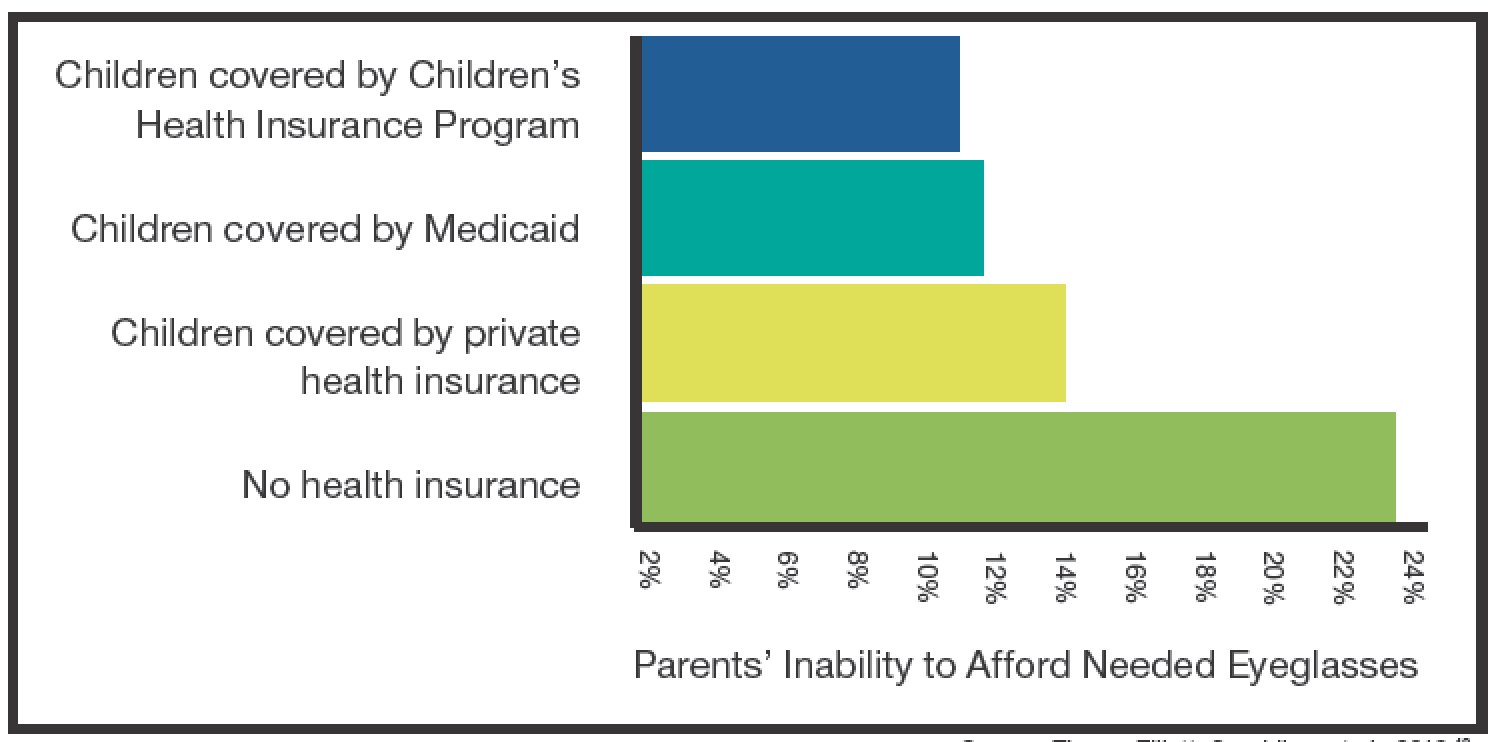 Source: American Journal of Preventive Medicine, 2012
Source: American Journal of Preventive Medicine, 2012
The research study highlights the lack of “vision equity.”
“It is incumbent upon us to identify targeted outreach strategies benefiting children with special health care needs,” write its authors. “Such strategies must also be targeted to children in lower-income households, in households with less formal education, those who are Medicaid/SCHIP recipients, those with inconsistent or no insurance, and those in which the household language is other than English.”
Mitigating longstanding inequities requires:
- Creating systems to improve adherence to recommended vision assessments and interventions
- Reimbursement strategies for sustainable, in-school vision care programs
- Better uniformity of state-level policies on early detection and surveillance of vision disorders
Vision screening in educational settings is vital
The crux of the report by the National Center for Children’s Vision and Eye Health (NCCVEH) is educators, health, professionals in early childhood programs and school nurses must now become advocates for providing vision screening services for children.
The NCCVEH recommends an annual professional eye examination for children aged 36 to 72 months. They’ve developed the following framework for a comprehensive vision screening process.
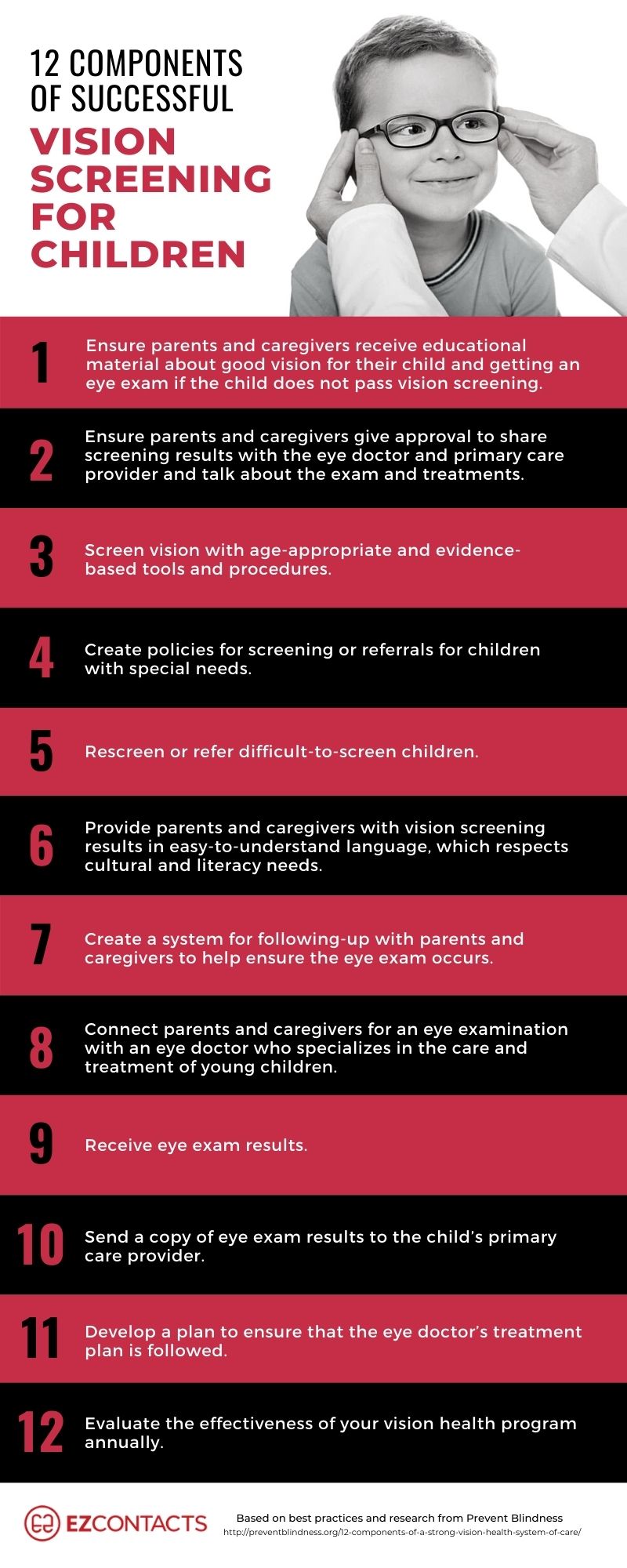
The research is deep (and downloadable)
To learn more about this subject, download the full report here.
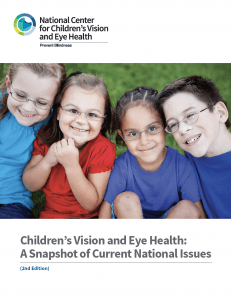
The report offers more detailed data regarding the topics in this article as well as additional information about visual screening procedures, and recommendations for national guidance and building state vision health programs.

